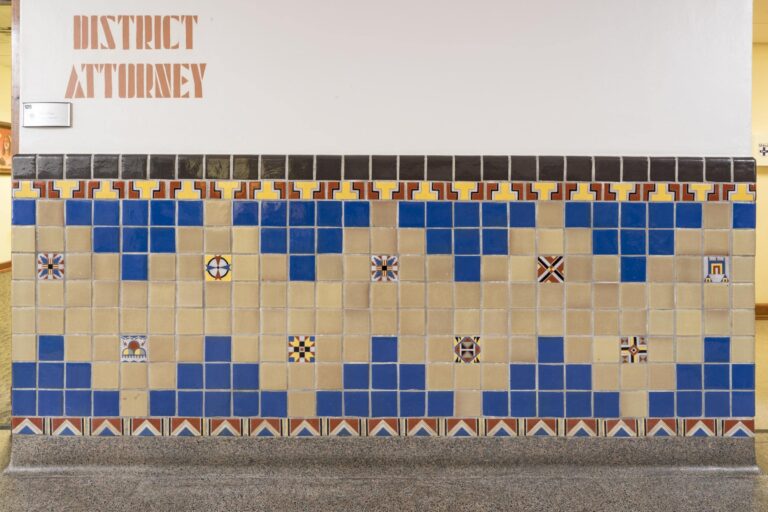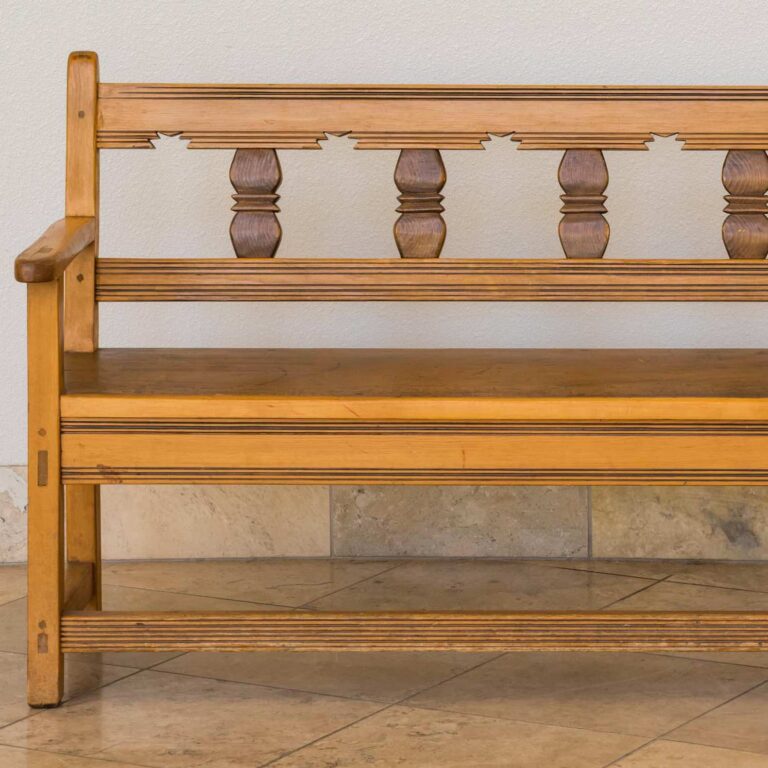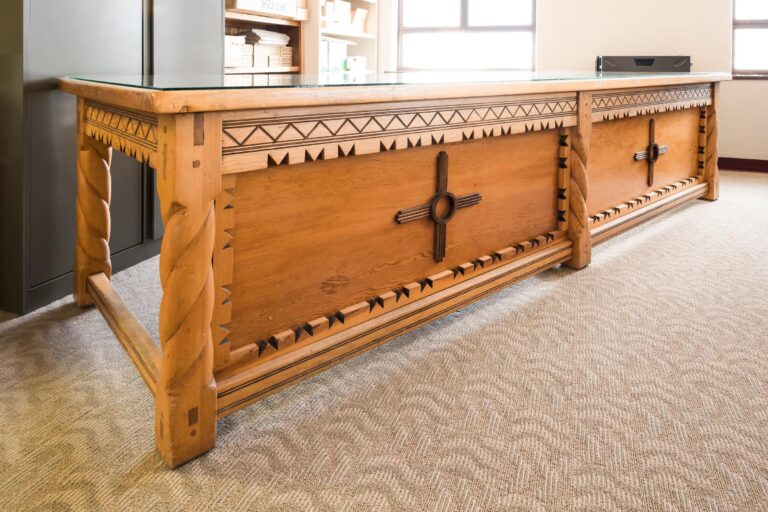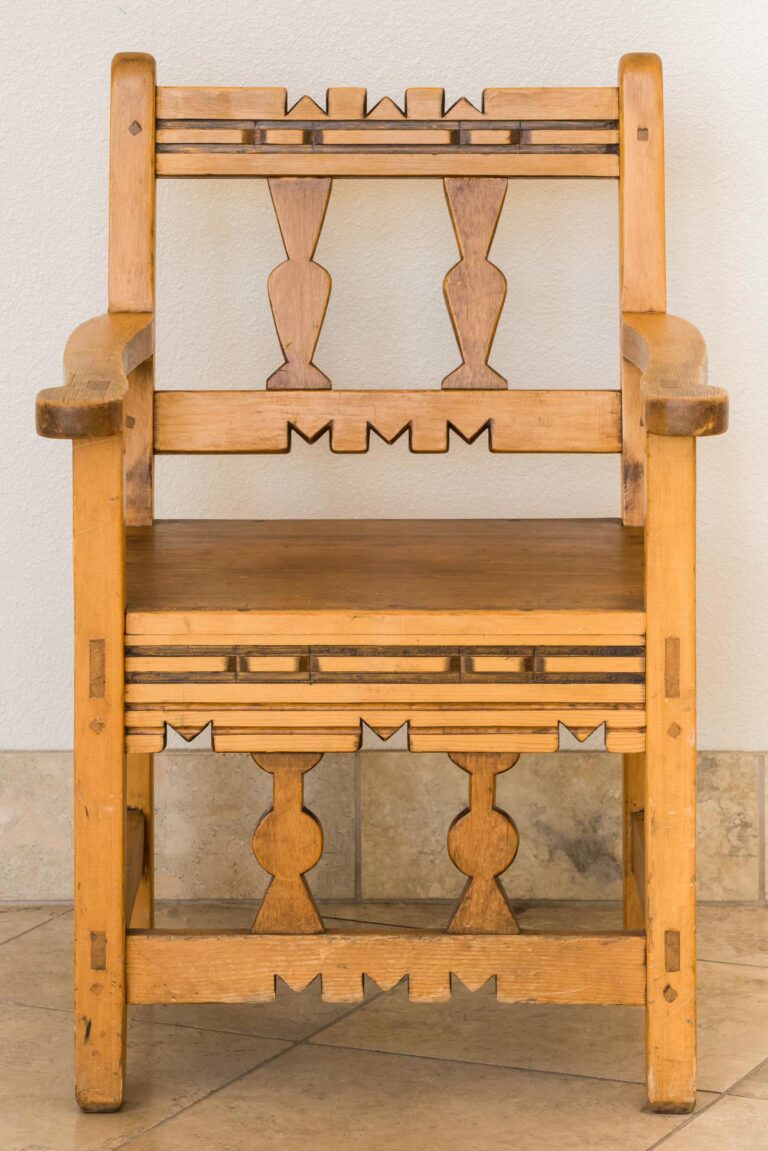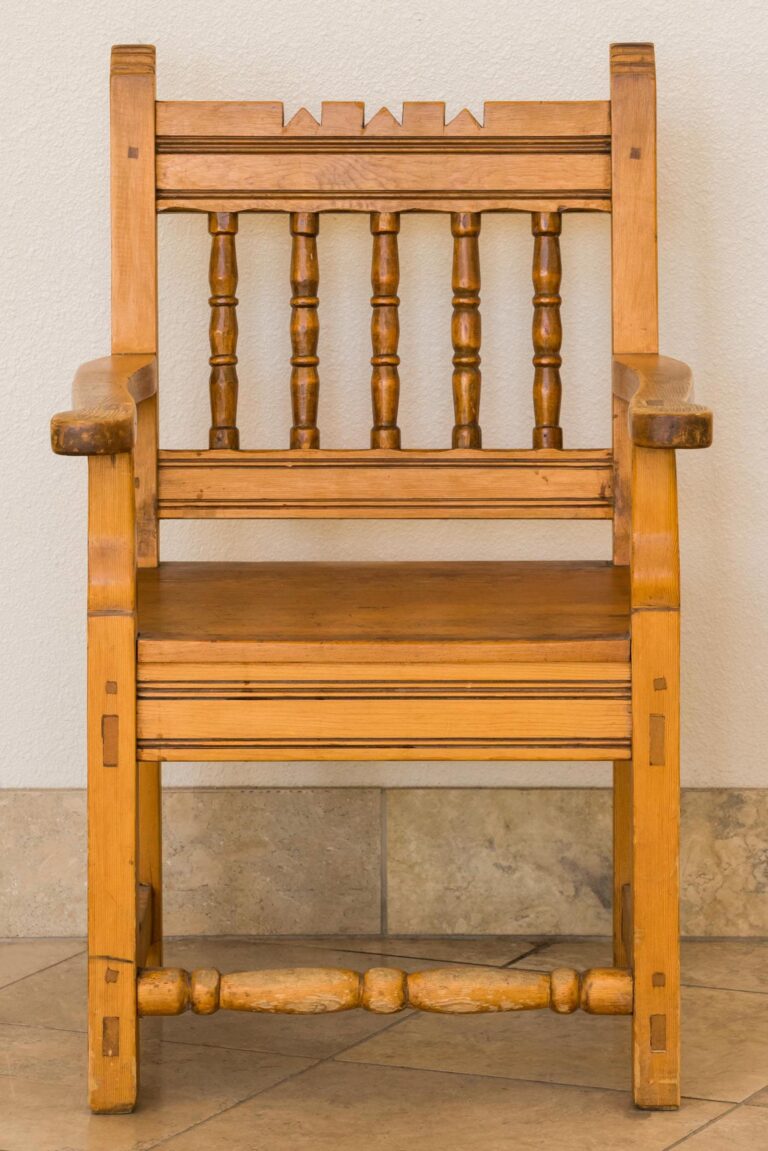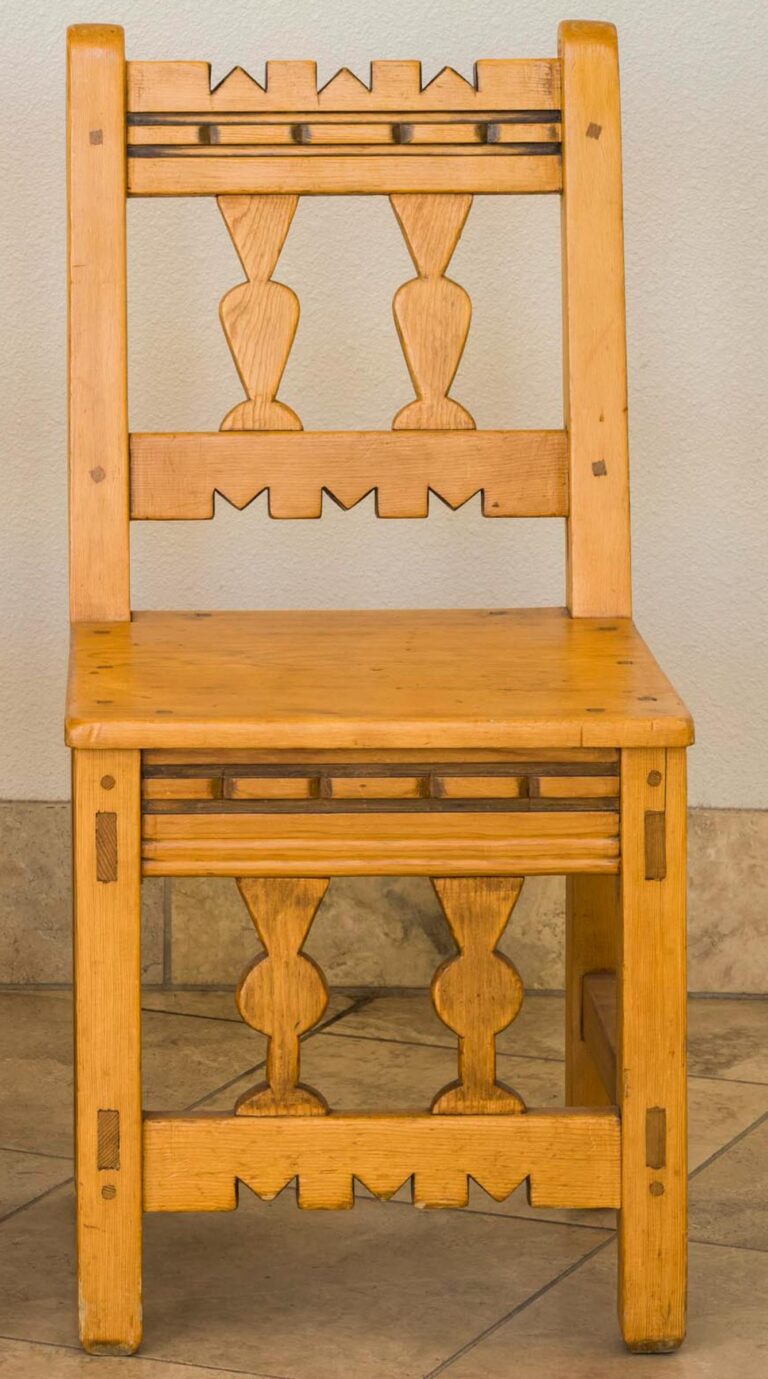Generally speaking, New Deal art programs distinguished between “fine art” and “craft,” employing artists and producing work on the basis of a false dichotomy rooted in racial and class biases. As Tey Marianna Nunn details in her authoritative work on the subject, Sin Nombre: Hispana & Hispano Artists of the New Deal Era, “with few exceptions, Spanish-speaking artists and their art were accorded second-class status. Since Anglos administered almost all the WPA1 art programs in New Mexico, the inclusion of and assignment to arts programs of what was considered ‘handicraft’ and what was considered ‘art’ correlated directly with Eurocentric perceptions and preconceptions.”2 Hispano3artists were mostly classified as “craftspeople” or “laborers,” and, in turn, their art was mostly viewed as “handicraft.” They were thus rarely credited for their work. To quote Nunn: “A direct result of these misguided and commonplace attitudes is the ‘undocumented’ status of Hispana and Hispano artists who created works in a variety of media for WPA Programs, vocational schools, and retail outlets. The majority of Hispana and Hispano WPA artists worked with traditional materials such as tin, fabric, and wood; mediums that were not considered elements of fine art according to dominant artistic values and aesthetic sensibilities at the time.”4
This is largely the case for Gallup’s New Deal art collection. The names of the artists who created the collection’s wood furniture pieces, tinwork light fixtures, and ceramic glazed tilework are unrecorded (again, likely because these objects were considered utilitarian, decorative items, therefore not art, and their makers laborers, not artists). It is assumed that these artworks were produced by Hispano artists whose authorship we hope one day to be able to credit.
The one exception in Gallup’s collection is Elidio Gonzales. Nunn was able to find his name, as well as those of other Hispano New Deal artists, “buried deep in archival repositories.”5 According to Nunn, Gonzales likely made several, if not most, of the wood furniture pieces in Gallup’s New Deal art collection.


